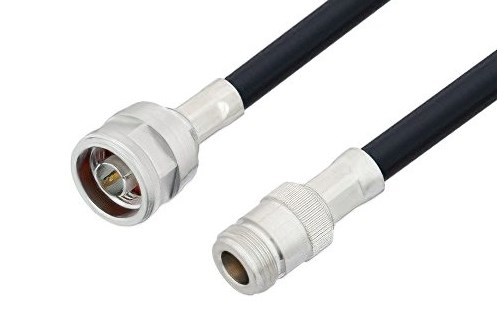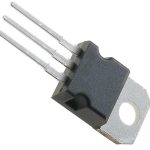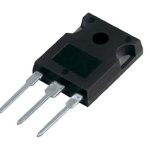Coaxial cables are an integral component of modern communication systems, providing a reliable means of transmitting high-frequency signals over long distances. Among the various types of coaxial cables available, LMR400 stands out as a versatile and high-performance option. In this blog, we will explore everything you need to know about LMR400 coaxial cables. Keep reading this blog so you can learn more!
What is LMR400?
LMR400 is a type of coaxial cable that is widely used in various applications, particularly in the field of telecommunications and radio frequency (RF) technology. It is known for its low loss and excellent shielding capabilities, making it ideal for transmitting high-frequency signals with minimal signal degradation.
What is LMR400 used for?
LMR400 is primarily used for long-distance communications and RF applications where low loss and high performance are critical. It is commonly used in wireless networks, radio transceivers, antennas, cellular base stations, satellite communication systems, and other similar applications that require efficient signal transmission.
Features
- Low Loss: LMR400 has a low attenuation or loss characteristic, which means it can transmit signals over longer distances with minimal signal degradation. This feature makes it suitable for applications that require extended cable runs or where signal quality is crucial.
- Excellent Shielding: LMR400 has a dual shield construction, comprising an aluminum foil layer and a tinned copper braid, which provides exceptional electromagnetic interference (EMI) and radio frequency interference (RFI) shielding. This shielding capability helps minimize signal loss and external interference, ensuring reliable signal transmission.
- High Power Handling: LMR400 has a relatively high power handling capacity, allowing it to handle higher power levels without significant signal loss or damage to the cable. This feature makes it suitable for applications that involve high-power RF transmissions, such as in broadcasting or military communications.
- Wide Frequency Range: LMR400 is designed to operate within a wide frequency range, typically from DC (Direct Current) up to 6 GHz. This broad frequency range makes it versatile and compatible with various RF systems and equipment.
Datasheet
To check the LMR400 datasheet, you can click here right now!
Price
The price of LMR400 can vary depending on factors such as length, manufacturer, and supplier. Generally, LMR400 is considered a premium coaxial cable and tends to be more expensive compared to other standard coaxial cables like RG8, RG58, or RG213. The price can range from a few dollars per foot to several dollars per foot for longer lengths. It is recommended to check with local suppliers or online retailers to get accurate pricing information based on specific requirements.
Below is a reference table that can help you make a budget:

Compare With Others
LMR400 vs RG8
RG8 is a commonly used coaxial cable that offers good performance at a lower cost. However, when compared to LMR400, there are some key differences. LMR400 has lower loss and better shielding, making it more suitable for longer cable runs and higher frequencies. Additionally, LMR400 has a larger diameter, which contributes to its lower loss characteristics.
LMR400 vs RG58
RG58 is a thinner and less expensive coaxial cable commonly used in shorter cable runs. While RG58 may be suitable for certain applications, LMR400 outperforms it in terms of lower loss, better shielding, and higher power handling capabilities. If you require longer cable runs or need to transmit signals over higher frequencies, LMR400 is the superior choice.
LMR400 vs RG213
RG213 is another popular coaxial cable known for its robustness and durability. However, when comparing LMR400 with RG213, LMR400 once again comes out on top in terms of lower loss and better shielding. LMR400 is designed to handle higher power levels and is more suitable for applications requiring long cable runs or higher frequency transmissions.
LMR400 vs KMR400
KMR400 is a variant of LMR400 that is specifically designed for outdoor use and offers enhanced weather resistance. While both cables share similar characteristics in terms of low loss and high performance, KMR400 has additional features such as UV protection and moisture resistance. If you need a coaxial cable for outdoor installations, KMR400 provides added durability and longevity.

FAQs
Is LMR400 good?
Yes, LMR400 is considered to be an excellent coaxial cable option. Its low loss characteristics, superior shielding, and high power handling capabilities make it a popular choice for various applications. Whether you’re setting up a wireless network, installing antennas, or working on other RF projects, LMR400 is highly regarded for its performance and reliability.
Is LMR400 bad for repeaters?
No, LMR400 is not bad for repeaters. In fact, LMR400 is commonly used in repeater installations due to its low loss properties and ability to handle high power levels. It provides efficient signal transmission, ensuring that repeaters can effectively amplify and retransmit signals without significant loss or degradation. LMR400 is often the preferred choice for repeater systems that require reliable and consistent signal distribution.
Conclusion
In summary, LMR400 coaxial cables are an excellent choice for high-frequency signal transmission due to their superior construction, low-loss characteristics, and wide range of applications. Whether you are setting up a professional communication network or seeking to enhance the performance of your home entertainment system, LMR400 cables offer the reliability and efficiency you need.



